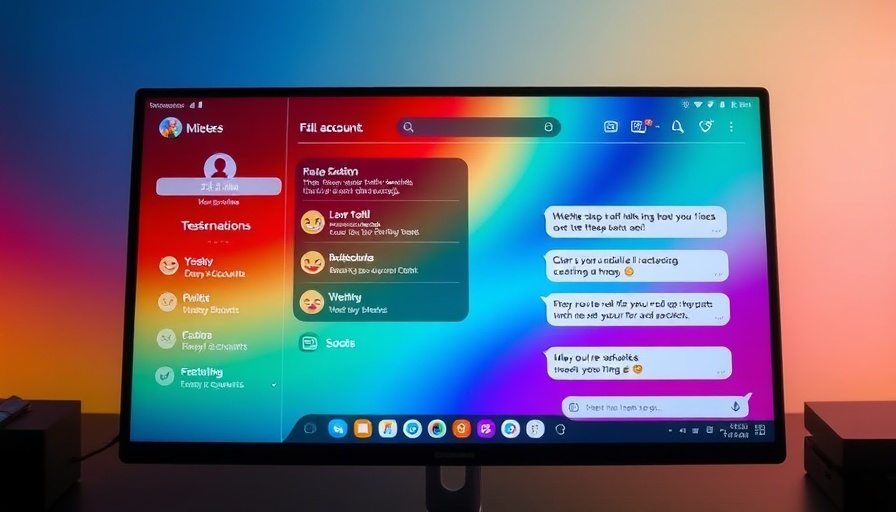
Revolutionizing Messaging: Beeper's Latest Upgrade
Beeper, the all-in-one messaging app, is making waves by relaunching with a groundbreaking on-device model that enhances user security and privacy. No longer reliant on its cloud services, this approach promises to keep users' chats safer than ever while simplifying their messaging experience. With over a dozen messaging services integrated into one platform, Beeper aims to solve the frustration of juggling multiple chat apps daily.
Advanced Features Designed for Users
Among the notable enhancements are the new premium upgrades that set Beeper apart from its competitors. The freshly introduced Beeper Plus plan, priced at $9.99 per month, allows users to connect up to 10 messaging services—a significant upgrade from the free version's five. Additionally, power users can now send messages later, schedule reminders, use incognito mode for discreet reading, and enjoy AI voice note transcriptions. This convenience reflects a shift towards user-centric design in mobile technology.
The Influence of Automattic
After being acquired by Automattic for $125 million, the app has now leveraged synergies with Texts.com, creating a streamlined experience that benefits cross-platform users. Automattic's CEO emphasized the commitment to ensuring secure communication through direct connection to messaging networks, thereby preserving end-to-end encryption. This move aligns with growing consumer demand for privacy and security in digital communications.
Key Challenges Ahead
Despite the advantages, Beeper's strategy of bypassing original messaging apps may create friction with companies like Telegram and WhatsApp. As various messaging platforms navigate the evolving digital landscape, Beeper’s model could face challenges in maintaining access without upsetting established provider relationships. CEO Kishan Bagaria acknowledges this tension but expresses optimism, stating that existing collaborations may help allay concerns.
The Future of Messaging Services
Looking ahead, regulatory pressures like the EU regulations demanding interoperability among messaging platforms could position apps like Beeper favorably. If producers of prominent messaging apps adopt methods that foster compatibility, Beeper may thrive as a viable alternative for consumers eager to streamline their communication needs without compromising privacy.
Conclusion: Embracing Technological Advancements
As the messaging landscape evolves, Beeper’s relaunch shines a spotlight on the increasing need for security, efficiency, and user control. As consumers and businesses alike look for more sophisticated ways to communicate, the innovations introduced by Beeper could set a new standard in the realm of digital messaging. For tech enthusiasts and everyday users seeking the latest advancements in technology news, Beeper’s enhancements present a compelling case study in the future of mobile communication.
Stay informed about the latest trends in technology and how they impact your daily life and business. Learn more about apps like Beeper and other innovations shaping our digital conversations.
 Add Row
Add Row  Add
Add 



Write A Comment